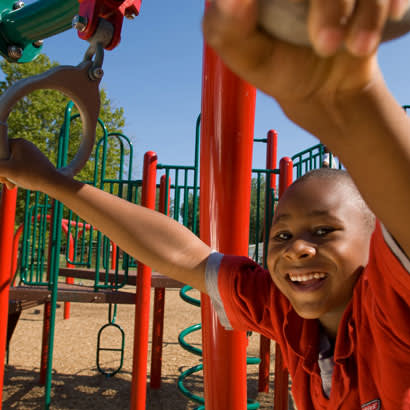
Parks and recreation centers are the cornerstones of our neighborhoods; they bring communities together. So, shouldn’t the community have a stake in the development and long-term success of these public spaces?
NRPA developed the Community Engagement Resource Guide: Creating Equitable Access to High-Performing Parks because we believe that all people should have a seat at the table and a voice when it comes to the planning, design, construction, maintenance and activation of park and recreation spaces. This resource guide is designed to provide park and recreation professionals the tools to conduct community engagement, with an emphasis on equity and inclusion.
Facilitating an inclusive and meaningful engagement process ensures that our parks and public spaces are created by the people they are intended to serve. Local park and recreation agencies work diligently to make this vision a reality in communities across the country, striving to ensure that their sites provide the health, environmental, social and cultural benefits that their communities deserve.
To address this, we have identified four primary categories:
1. Internal Assessment — Before starting community engagement, agencies must look at existing resources, current engagement strategies and create a plan with clear goals. Along with a framework and spectrum for engagement, this guide identifies the four specific steps to address:
- Assessing staff capacity
- Securing funding
- Building leadership support
- Creating a plan with clear goals
2. Building Trust with Communities — Meaningful engagement requires building relationships and trust to truly listen to and support the community. Specifically, underserved communities have experienced years and decades of disinvestment and have been left out of decision making or undergone disingenuous engagement and been ignored. To address this, agencies must:
- Acknowledge past experiences
- Involve local community leaders and partners
- Be transparent and deliver on promises
3. Community Engagement Strategies — Every community is different, so what works in one community may not work in another. Through communication strategies, a mixed methods approach and best practices, an agency can facilitate intentional meaningful engagement that will bring the best results.
4. Evaluation — Ongoing evaluation is critical to community engagement efforts and will determine if target populations are engaged and will inform future approaches. Engaging the community in the evaluation process will help ensure the agency is asking the right questions and involving the right people.
This Community Engagement Resource Guide is intended to provide park and recreation agencies with a roadmap highlighting the essential steps to performing meaningful engagement around neighborhood-level and park-system planning projects. Check out the guide and use it to strengthen the bond between your agency and the people you serve.
Jared Mummert is a Program Specialist for NRPA.

